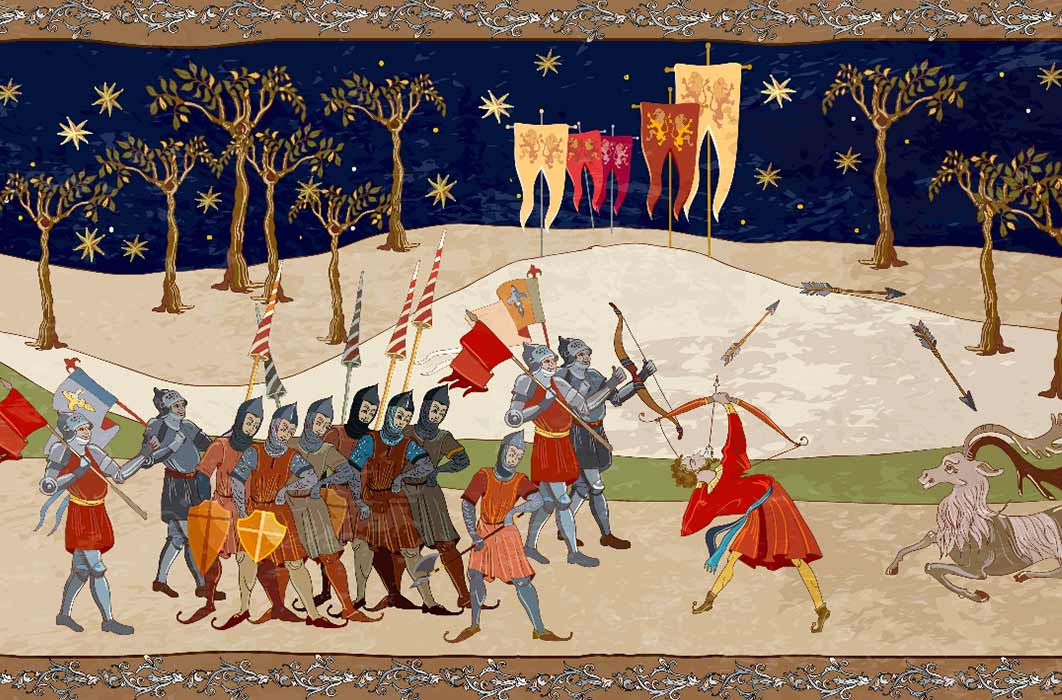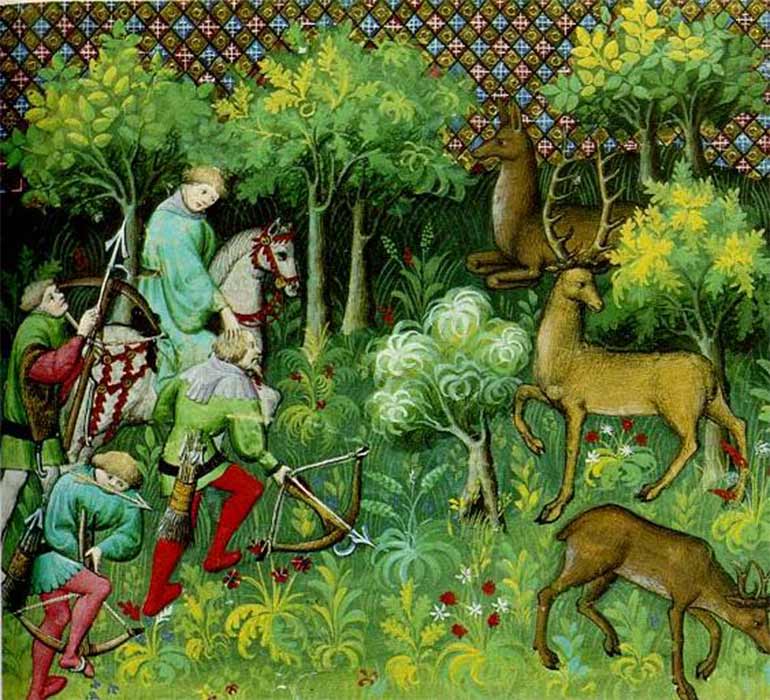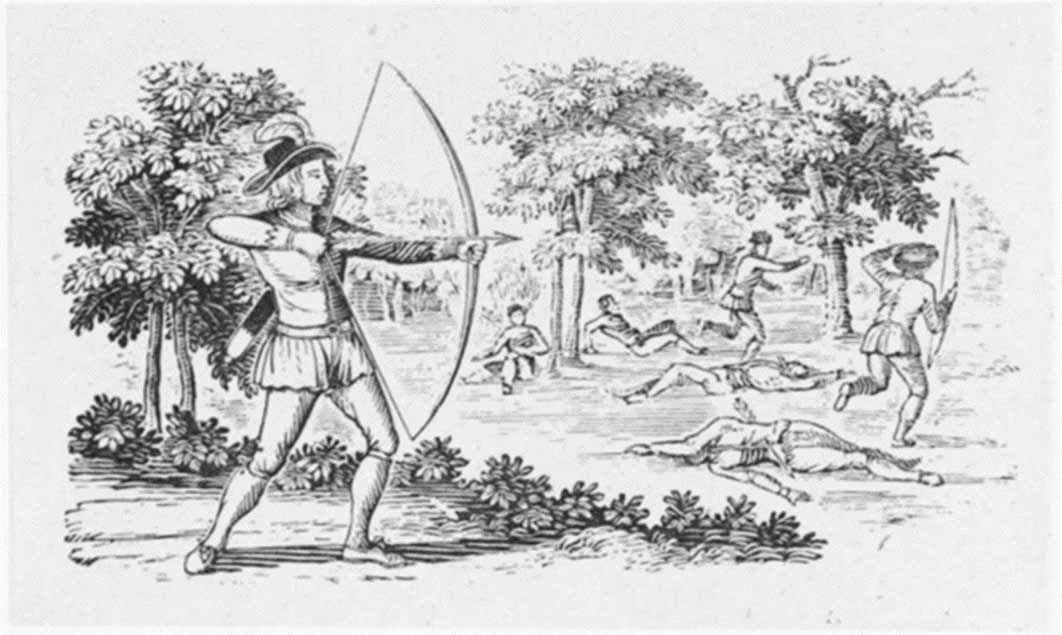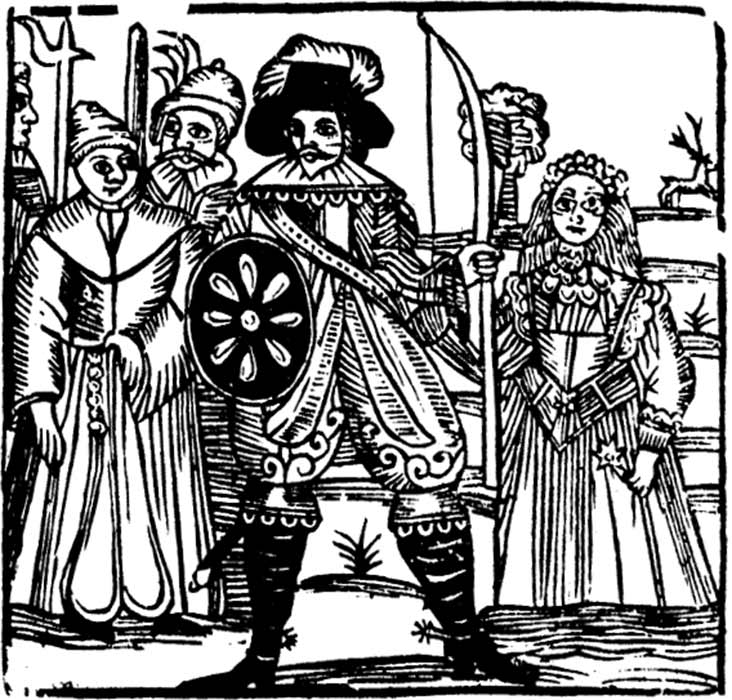
Venturing Into The Symbolic Landscape Of Robin Hood’s Sherwood Forest
The site of Sherwood Forest, legendary home of ‘Robin Hood and his Merry Men’ lies a bit more than 240 kilometers (150 miles) west of London. In the 1200s, which is usually considered by many to be the time Robin trod these woods, Sherwood covered more than 100,000 acres, roughly a fifth of the county known as Nottinghamshire. Evidence of flint tools used by pre-historic hunter-gatherers have been dug up, indicating the area has been popular for thousands of years. It had been a wooded forest ever since the end of the last glacial epoch and was considered a private royal hunting ground. Any wild game was considered the property of the king, so when a commoner killed game for his family’s table, he was considered a poacher. Eating ‘the king’s deer’ was a capital offence, punishable by severe methods, including death.

Medieval forest scene, from the Livre de chasse (1387) (Public Domain)
Running right through the middle of the forest lay the Great North Way, a highway of sorts connecting London and York. Any travelers usually went heavily armed in order to protect themselves from robbers who lived outside the law. Ever since those times, such thieves have been called ‘outlaws’.
Sciryuda: Woodland Belonging To The Shire
The place was first recorded as a geographical area unto itself in 958 AD. It was called Sciryuda, which means “the woodland belonging to the shire.” It became a royal hunting preserve in 1066, following the Norman invasion of England, and was a favorite hunting spot of Kings John and Edward the First. The ruins of King John’s hunting lodge still stand near the village of Kings Clipstone.
In those days, ‘forest’ did not simply refer to a stand of trees. It was a legal term signifying an area subject to royal laws put in place to protect timber and wild game. A ‘forester’ did not just keep track of the health of trees. Sometimes called agisters, wardens (verderers) and rangers, these were all men hired by the Crown to patrol the area. They were well-armed, and were expected to employ even lethal force when necessary.

Altercation between Outlaws and Agisters. Woodcut from ‘Robin Hood A Collection of Ancient Poems, Songs Ballads’ by Joseph Ritson (1885) (Guttenberg Project)
During the time of the Roman occupation, and extending back all the way to the Iron Age, farming communities, some of which exist to this day, cleared large areas of land, so it was not all covered with trees and woods in various stages of development. Farmsteads were quite common. To this day, Scandinavian influences can be found in towns that end in the letters b and y, such as Thorresby. Danish names tend toward ending in ‘thorpe’, as in Gleadthorpe. Town names ending in ‘feld’, as in Mansfield, illustrate their Roman roots.





